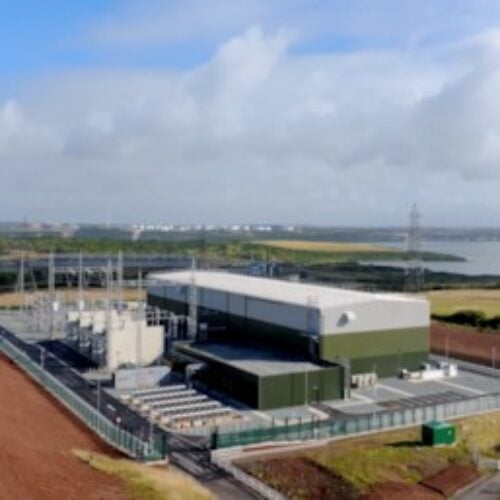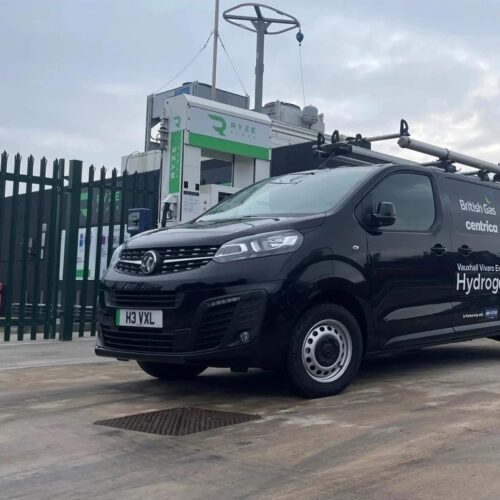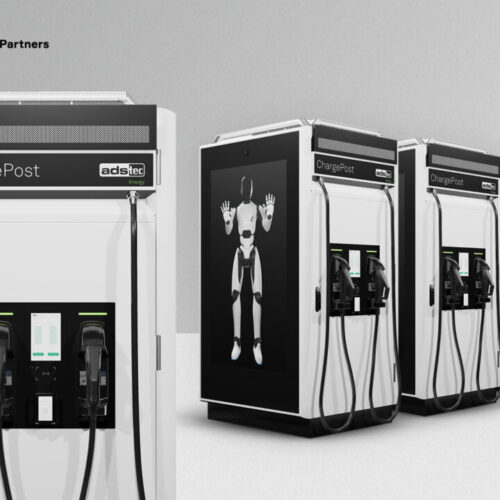Decarbonising manufacturing and industry is a major challenge that does not have easy answers. While many sectors can take the route of relying on onsite solar capacity or electric battery energy storage systems, the immense heat needs of sectors such as brewing and distilling, paper manufacturing, or food processing make this unviable for many.
At the other end of the scale, more costly solutions that are often the focus of industries such as steel or cement, like hydrogen, can’t easily be scaled down for smaller operations.
Enter Caldera. Founded by James Macnaghten and Guy Winstanley, the company has developed a heat storage technology that allows for reliable, lower-carbon heat usage. By fitting heating elements into blocks of porous rock and recycled aluminium, heat generated when renewable energy is cheap and abundant can be stored, and released as steam when needed. The company’s system is modular and scalable, and can be integrated with existing boiler systems or heat pumps.
Current± spoke to James Macnaghten, co- founder and CEO of Caldera, to see how the company is targeting the decarbonisation of industrial heat.
How did you found Caldera?
Guy [Winstanley, Caldera co-founder] and I have worked together in energy storage for years. I realised that storage has to be phenomenally cheap to be worth putting in, and therefore you have to have the most aggressive cost targets. In bed at night, at three or four in the morning, I had this really weird idea: Could you combine aluminium, with good conductivity, with rock, which is very low cost? We pretty much made our first block the next day. The company progressed from that point. We are very passionate about what we do; I want us to have an impact. Everyone in the company wants to have an impact.
How does the technology work?
We make large blocks of aluminium and rock, weighing about a ton and a half each. We take a container full of rocks about the size of garden gravel, then heat the rocks up, then take very low-grade scrap aluminum, melt it, and pour it on top of the rocks, and it runs through them all. It then goes solid, and you now have this big block like an aluminium sponge holding all the rocks in place.
Before we pour the aluminium in, we put in electric heating elements similar to what you would have in an oven but industrially designed. We embed them directly in the block and also put a steel coil inside the block, and that is how we get the heat out. When there is an abundance of renewable energy, we heat the element inside and the aluminium, which is extremely conductive, gets up to about 500 degrees.
Within each block, there is a mini-system; we can heat the block directly with the electric elements, and take the heat out through the coil. When we want to take heat out, we push a little water in. This water boils and turns to steam, which absorbs lots of energy, which we pass to a heat exchanger at high pressure. This heat is then available for industrial processes as either hot water or steam, at temperatures up to 200 degrees and pressures up to ten bars. By controlling the amount of water we put in, we control how much heat we take out.
We do not want to lose all this heat because it’s expensive, so we have our high-temperature vacuum insulation, which comes in the form of a giant teacup that you can turn upside down and drop over the block to form that sort of vacuum around the outside. The cover is this double-skin, steel vessel that is unbelievably good at keeping the heat in.
Why did you choose to focus on the lower-temperature area of the market that you did?
We are interested in everything under 200 degrees Celsius, which is between 30% and 40% of all industrial heat used worldwide; it produces more carbon emissions than all cars in the world. I get very frustrated with people talking about decarbonisation. People talk about steel or cement. There’s a huge amount going into green steel, and everyone is going, “oh, it’s really important. We tackle it because it’s hard to decarbonise”. Why are we tackling hard-to-decarbonise problems when we have solutions for something like 50% of all industrial heat today? So we are very much focused on where we can have the most impact? This is an easy one for us to tackle. We should all be tackling it, and we should just get on and do it.
What have you accomplished so far?
We have built systems at a megawatt, a couple of megawatt-hour scale. We have proved we can charge at half a megawatt and we have our own steam network at the factory. We have got a giant 15,000-liter tank of water we can heat in an hour and a half – think of it as a giant kettle! We have built up slowly but fundamentally by taking this modular approach.
What would you like to accomplish over the next five years?
We will be selling all over Europe. We will have units in North America, or be looking to open in North America. We have talked to companies with very big industrial projects that could take 300 of our units. For something that size, we will go anywhere in the world, but we are not ready to do that yet. So we can see ourselves having a large number of sales in Europe and units in North America. We want to have our supply chain completely contracted out to help us do that.





